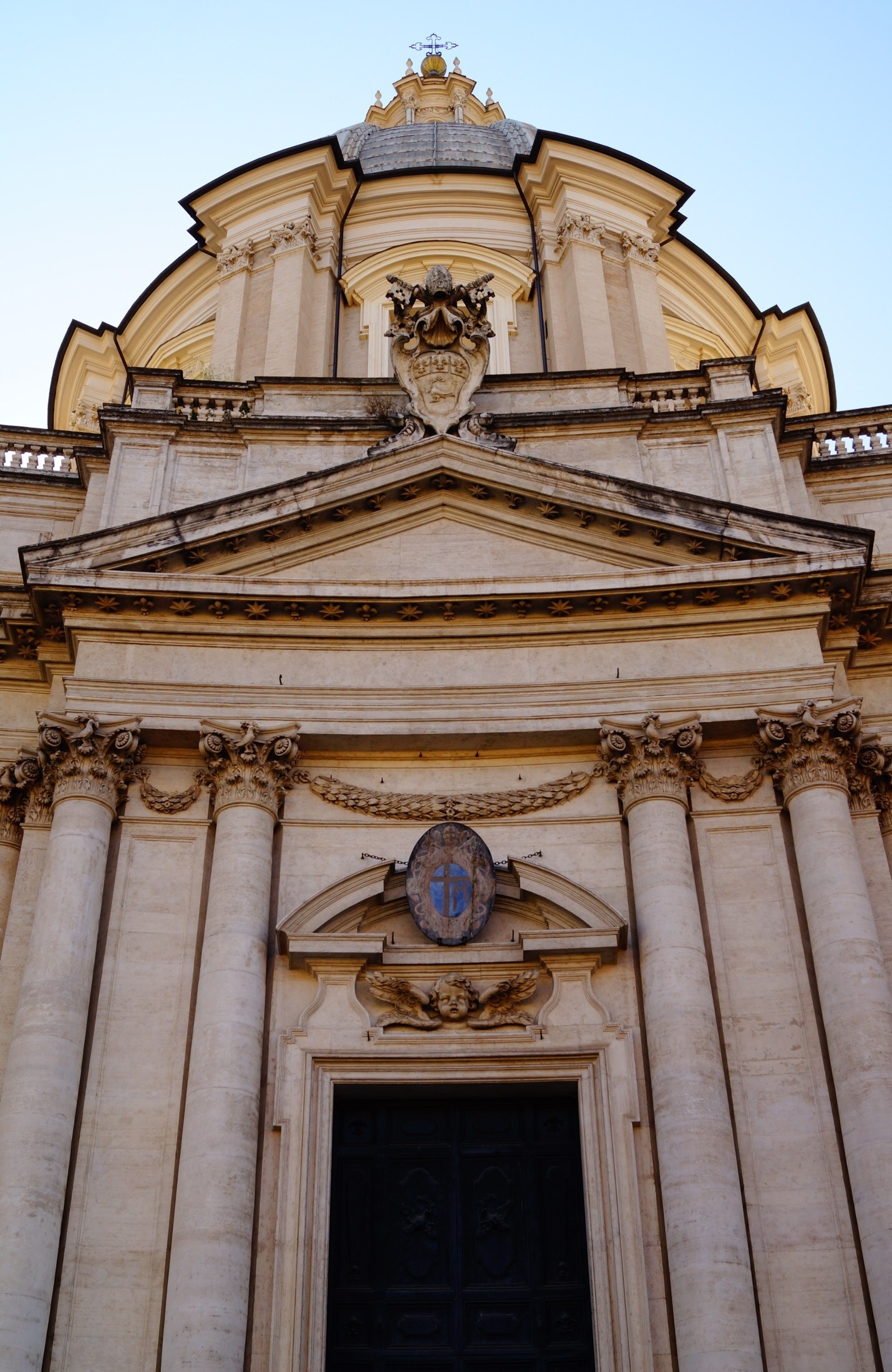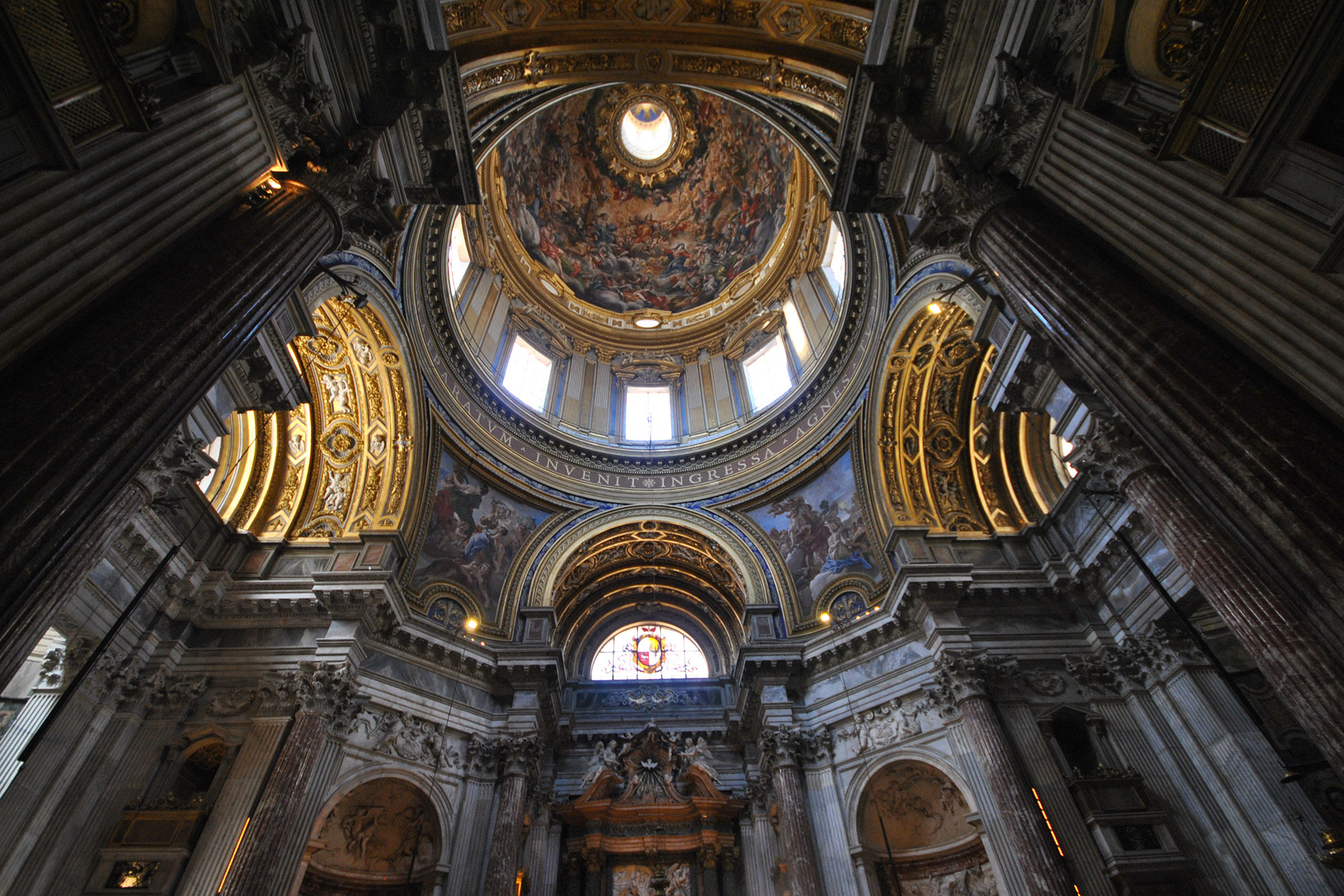
Sant Agnese in Agone Church, Rome, Italy Editorial Stock Image Image
Chapel of Saint Agnes. As part of the revisions to the plans for the church following the death of Pope Innocent X, the decision was made to dedicate a chapel to Saint Agnes, rather than the main alter, with the chapel being placed closer to the site of her martyrdom. Here, within a series of false perspectives, we see the statue of the church.

Baroque Wonder Sant'Agnese in Agone by the Reinaldis and Francesco
Sant'Agnese in Agone (also called Sant'Agnese in Piazza Navona) is a 17th-century Baroque church in Rome, Italy. It faces onto the Piazza Navona, one of the main urban spaces in the historic centre of the city and the site where the Early Christian Saint Agnes was martyred in the ancient Stadium of Domitian.

Pin on Sant' Agnese in Agone
Sant'Agnese in Agone - Official website Contatti Gli eventi culturali a Sant'Agnese in Agone sono a cura del Rettore di Sant'Agnese in Agone, assieme ai vari responsabili delle associazioni musicali. Per informazioni contattare il numero: Rettoria: +39 06… Read More Le origini

Sant'Agnese in Agone Wikipedia, the free encyclopedia Baroque
Address Piazza Navona Timetables For the timetable of the masses and visiting conditions, please consult the contacts. Contacts Email: [email protected] Telephone: 06 68192134 Web site: www.santagneseinagone.org Interactive map Choose events and services nearby + - Leaflet | © OpenStreetMap contributors Not to miss (12)

Spencer Alley Sant' Agnese in Agone
Sant' Agnese in Agone Of ancient foundation, the church of Sant' Agnese in Agone was rebuilt by Girolamo Rainaldi and his son Carlo, at the behest of Pope Innocent X (r. 1644-55), whose family palace stood next door. In 1653 the pair were replaced by Francesco Borromini, who added the splendid concave facade.

Top 20 Chiesa di Sant'Agnese in Agone, Rome cabin rentals from 59
Discover Rome: Sant'Agnese in Agone Sant'Agnese in Agone church: a far imperial past One of the most appreciated beauties in Rome is the church of Sant'Agnese in Agone. A religious building with an extraordinary structure, where the incredible history of great artists, nobles, powerful popes and emperors is hidden.

Historia, cultura y arte Sant'Agnese in Agone (obra)
The Baroque church of Sant'Agnese in Agone was commissioned by Pope Innocent X, of the Doria Pamphilj family. It stands on the site of a much older church dedicated to St. Agnes. According to popular belief, she was martyred on this very spot. History of the Church of Sant'Agnese

Baroque architecture Sant’Agnese in Agone
The high relief work shows the Holy Family with Saint Elizabeth, Saints John and Zacharia, in a scene of great vivacity and convincing compactness. The works for construction of the main altar of Sant'Agnese in Agone began in 1720, following plans prepared by Carlo Rainaldi but later revised by Ciro Ferri. The altar facade is composed of four.

Interior de la iglesia de Santa Agnese in agone (Santa Inés en Agonía
Sant'Agnese in Agone (Church of St. Agatha at the Circus Agonalis) Piazza Novona, Rome, Italy Completed: 1672 Style: Baroque 2002 Photographs 2013 Photographs TEXT Beneath Illustrations (Interior photographs not allowed) 2002 Photographs

Pin on City& Architecture
Sant'Agnese in Agone Rome, Italy. In the heart of Rome, on the Piazza Navona, the Church of Sant'Agnese in Agone is a jewel of Baroque architecture. Rainaldi, Borromini, and Bernini each had a hand in designing the church we see today. The interior is richly decorated with large‐scale sculptures and frescoes. Address

Santagnese In Agone Church Stock Photo Download Image Now iStock
The artists of Sant'Agnese in Agone. Alessandro Algardi (Bologna 1595 - Rome 1654), sculptor. Algardi's erudite and stylistic orientations were profoundly influenced by his teacher Ludovico Carracci. Of equal importance was his experience beginning in 1625, when Cardinal Ludovisi called Algardi to Rome for the restoration and reworking of.

Sant'agnese Church Of Sant Agnese In Agone Piazza Navona Rome
The historic organs. Giovanni Battista Pamphili commissioned a grand organ from the Flemish Jesuit Guglielmo Hermans, to be installed in the cantoria immediately above the church entrance; at the same time he created the position of the church musical director, at the head of a permanent choir. The organ was remodelled in the early 1800s and.

Historia, cultura y arte Sant'Agnese in Agone (obra)
The crypt, or sacellum infimum, is the only surviving part of the ancient church constructed at the place where Saint Agnes was martyred. Access is by a stairway to the right of the altar of the Chapel of Saint Agnes, which is itself designed by Borromini. Since at least the 7th century, the crypt has been venerated as the site where the young.

Church of Sant Agnese in Agone, Rome Italy Editorial Stock Image
Sant'Agnese in Agone When you visit Piazza Navona, you'll be totally surrounded by some of the best examples of Baroque architecture of the Capital. Among the stunning fountains and buildings, there is a church that definitely stands out, brightening up the square with its shiny marbles and intriguing facade.

Sant'Agnese in Agone, Piazza Navona, Rome. North campanile as modified
Origins P iazza Navona is an extraordinary urban expression of the Roman Baroque, but with an overall layout dating from the time of the ancient Stadium of Domitian (81-96 AD). T he stadium, considered one of the most important structures of its era, was probably still in use as R ome entered decline, in the 5th century.

Walking Tours of Rome Piazza navona, Rome, Classical facade
St. Agnes is widely known as the patron saint of young girls. She is also the patron saint of chastity, rape survivors and the Children of Mary. About the Church of Saint Agnes in Agony (Sant'Agnese in Agone) The crypt, or sacellum infimum, is the only surviving part of the ancient church constructed at the place where Saint Agnes was martyred.